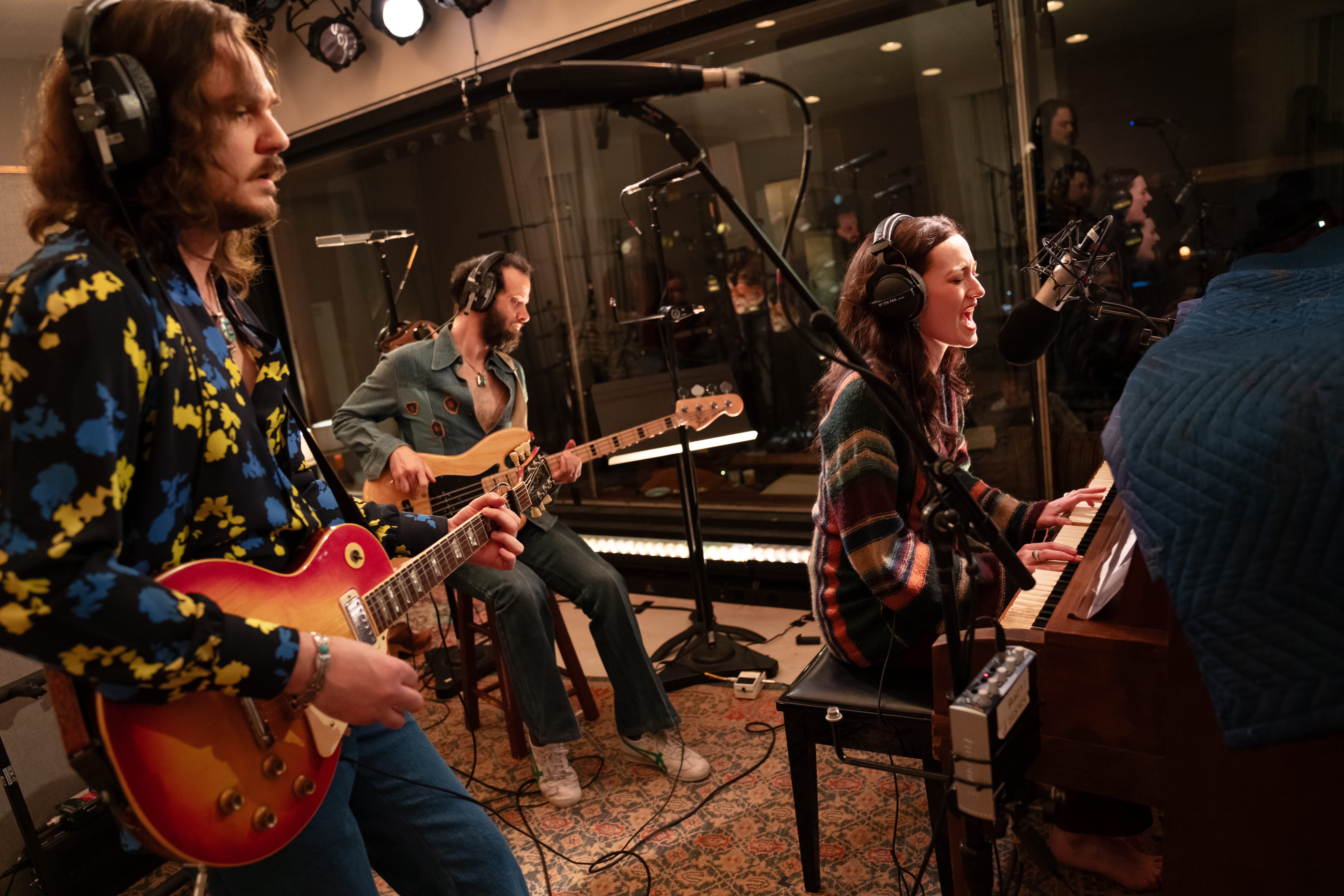Floyd Collins

in Floyd Collins
(Photo © Claudia Jaffee)
Ever since musical theater began moving away from the once obligatory sunshine, romance, and happy ending scenario, shows have been written with all kinds of unusual subject matter: murderous barbers whose victims get baked into pies, a town where you have to pay to piss, even a botched sex-change operation. But a man trapped 150 feet underground, stuck in a tight squeeze leading to a subterranean cave, unable to move and facing certain death? What is there to sing about in such a dismal story?
Thankfully, Adam Guettel (music and lyrics) and Tina Landau (book, additional lyrics, and director of the original production) took on the challenge. If less talented people had musicalized the true tale of what happened to a young Appalachian man during two winter weeks in 1925 Kentucky, the result would have been a far more mundane work. But Guettel and Landau chose to go beyond the obvious and the literal in recounting Floyd’s desperate situation and the efforts to free him; instead, their words and music reach for the loftier realms of the imaginative and the inspirational while retaining an earthy, down-home feel. Such contrasts are accented by Guettel’s ragged, often wildly dissonant, gorgeously freewheeling score, grounded in the folksy bluegrass music of the region. Floyd Collins is groundbreaking theater (pardon the pun).
Musical Theatre Guild, which presents forgotten and rarely performed musicals, offered a staged concert reading of Floyd Collins a few years back, but the West Coast Ensemble production marks the first full staging of the show in Los Angeles. Director Richard Israel employs every available playing area, including space in the side walls, to help establish the underground cave illusions that include “yer magical passageways, yer squeezes an’ bends,” as Floyd — the full-voiced Bryce Ryness — joyfully sings. Evan A. Bartoletti’s lovely slatted set creates a nice mining ambiance, and Cricket S. Myers’ satisfying sound design adds to the effect with plenty of warning rumbles and endless echoes. (The latter are an integral part of “The Call,” in which Floyd discovers the enormous cavern that he believes will bring him glory and financial security.)
However, the lighting design by Lisa D. Katz is a mixed bag. While Floyd’s cave contains “all the colors of the world,” which Katz nicely pulls off, other scenes are less nuanced. Particularly in those centering on the trapped Floyd, the lighting feels appropriately cold but too bright. A moodier, more shadowed look would help distinguish the underground area from scenes taking place above ground and would enhance Floyd’s claustrophobia and sense of danger.
Rescue efforts are complicated by the winter frost and other factors. Though several people try to reach the trapped man, only his brother Homer (an affecting Stef Tovar) and the nervous cub reporter William “Skeets” Miller (the memorable David Kaufman) are actually able to do so. Both try to free Floyd, but the dank, crumbling walls of the cave and way in which Floyd is wedged into position thwart their efforts. Still, Homer brings his brother food, comfort (in the haunting “Daybreak”), and encouragement (in “The Riddle Song,” the show’s most exuberant number), while Skeets conducts a series of interviews with him that chronicle his experience of being buried alive in the frozen earth.
Above ground, Floyd’s sister Nellie (Dana Reynolds), his father Lee (Larry Lederman), and his stepmother Miss Jane (Andrea Covell) struggle in different ways to keep faith that Floyd will survive. Nellie, who’s a bit touched in the head, sings to Miss Jane of her unshakable confidence in her brother and his dreams in “Lucky”; later, Lee and Miss Jane consider their children in the poignant duet “Heart ‘n Hand.”

(Photo © Claudia Jaffee)
The story of Floyd Collins is notable for being the first news event to draw nationwide attention through radio broadcasts and Miller’s syndicated reports. Eager reporters and everyday people came from far beyond Kentucky to see for themselves what was happening, to offer support, or to take advantage of the situation by selling refreshments and balloons. It was truly the birth of the media circus. In fact, Act II opens with the jaunty and amusing “Is That Remarkable?” sung by a trio of newspapermen who exploit everything they hear to grand proportions. Regrettably, the song is still relevant today.
Onstage, there is often guitar accompaniment from local boy Jewell Estes (David Nadeau). Offstage, the small orchestra — piano/keyboard, percussion, bass, violin and banjitar — acquits itself as best it can. The sound is sometimes a bit thin, and without the distinct influence of a harmonica or a fuller banjo sound, the Appalachian flavor of the music is somewhat diminished. Similarly, Alayna Marie Miller’s costume design does not go far enough in setting the proper tone. While the styles seem appropriate, there is still an off-the-rack feeling about the clothing; nothing feels handmade or handed down, or bears the frayed, worn look that comes from living in harsh conditions with few resources.
But these are fairly small complaints, undoubtedly more reflective of a small budget (West Cost Ensemble is an Equity waiver, 99-seat theater) than anything else. Overall, this production of Floyd Collins certainly hits more than it misses. And, as Floyd might have said, ambition is a most worthy quality.












